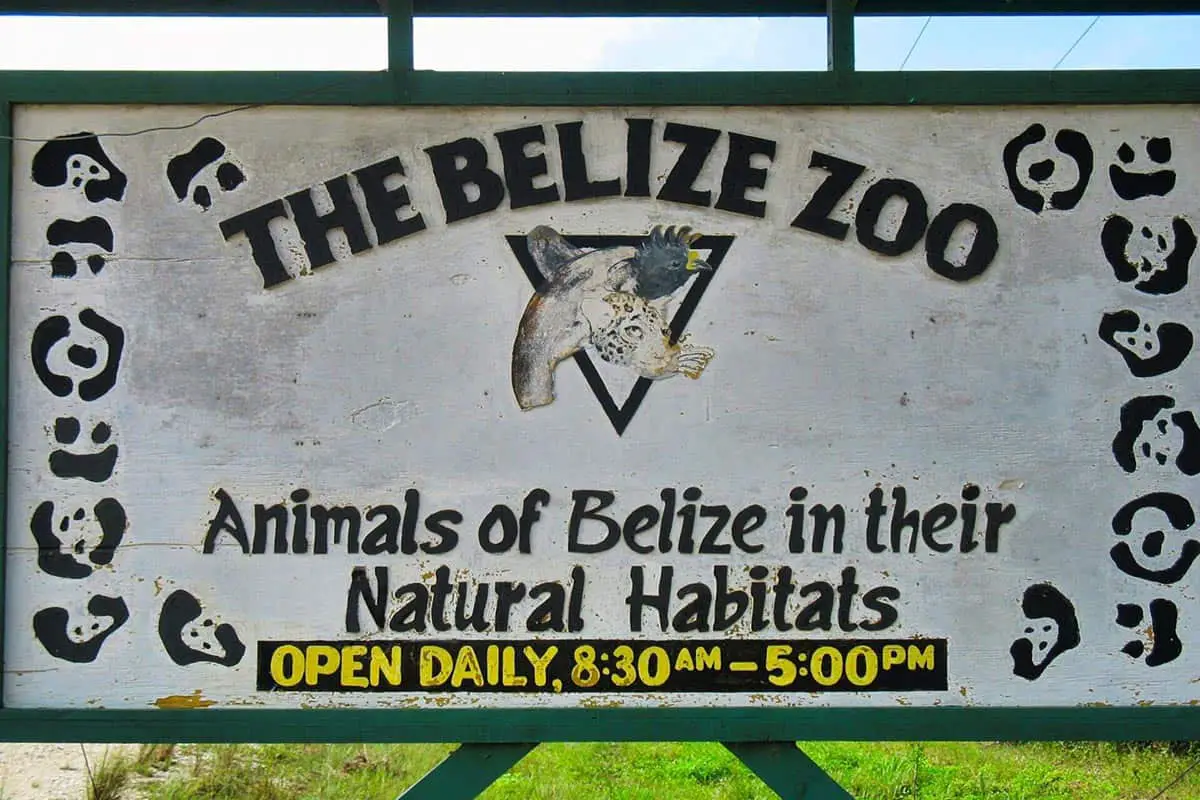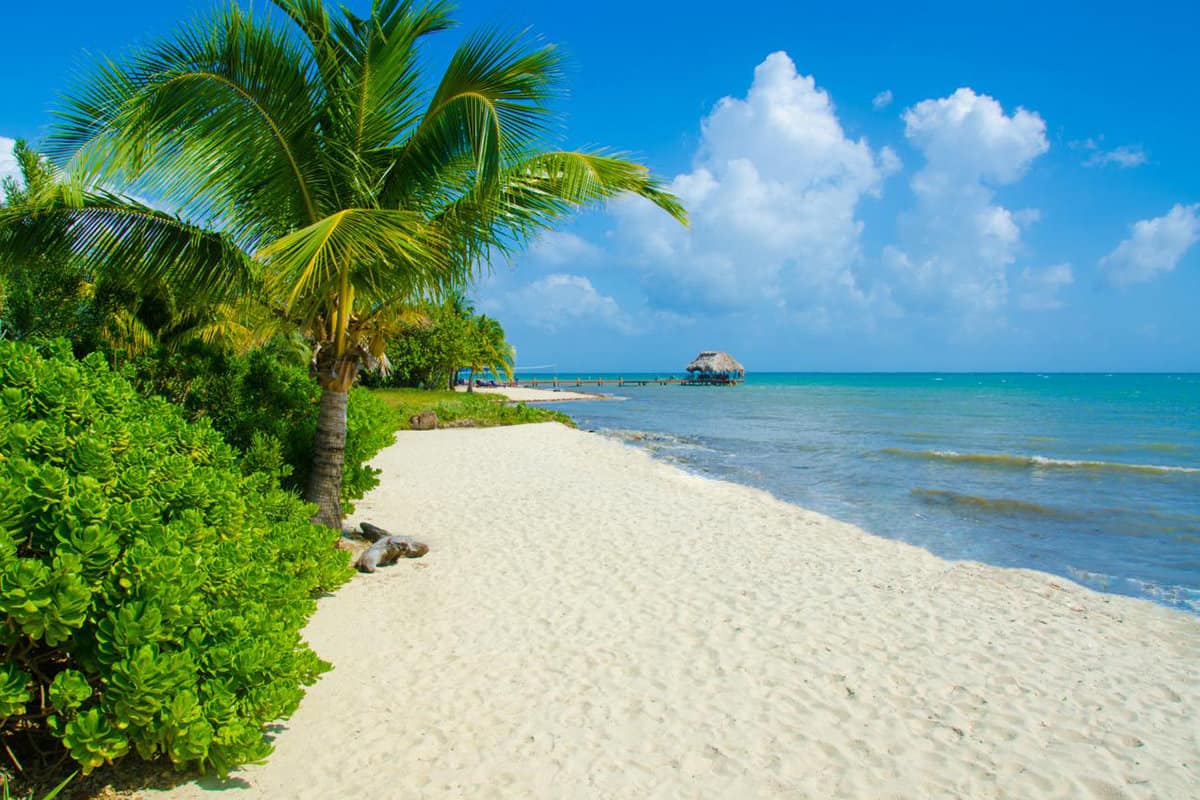Looking for an unforgettable wildlife experience during your visit to Central America Belize?
Then you’ll want to visit the Belize Zoo and Tropical Education Center!
Our comprehensive guide will take you on a virtual tour through this extraordinary zoo, highlighting its conservation and educational efforts as well as its must-see attractions.
Prepare yourself for an adventure that speaks volumes about the rich biodiversity of Belize!
Key Takeaways
- The Belize Zoo is located 47 kilometers west of Belize City and houses over 175 animals from about 48 species native to the country.
- The zoo was started in 1983 by Sharon Matola and has grown to become a big help to nature, taking care of animals and running important conservation programs for tapirs, harpy eagles, and jaguars.
- The zoo serves as an education center, teaching people about Belize’s wildlife through live animal exhibits. It also offers night tours and runs educational programs for problem jaguars, harpy eagles, and tapirs.
The History of Belize Zoo
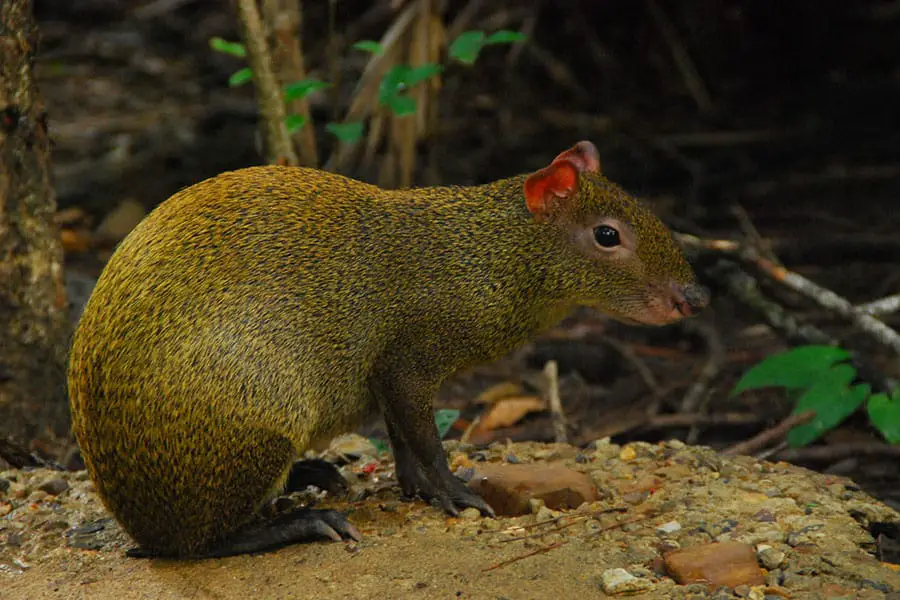
Sharon Matola started the Belize Zoo in 1983.
At first, it was a small place for animals left by a film crew. They didn’t have money to care for these animals anymore. But Sharon Matola took over and made sure they were safe.
Later on, the zoo got bigger and better. Now, it has more than 175 animals living there! All of them are from Belize.
The zoo has also grown larger to 29 acres!
Every year, over 68,000 people come to visit: students, teachers, parents and animal lovers from all over world!
In fact, the Belize Tourism Board even gave the zoo an award in 2009 for teaching people about nature in fun and exciting ways.
Animal Exhibits and Encounter Experiences
At Belize Zoo, you get to meet many animals. These come from almost 50 different species.
Every one of them is a local to Belize.
- Big cats like jaguars, pumas, and ocelots.
- Deer like white-tailed deer and red brocket deer.
- Different monkeys such as Yucatan spider monkeys and black howler monkeys.
- Birds like scarlet macaws, keel-billed toucans, king vultures, and harpy eagles.
- Reptiles including American crocodiles, boa constrictors, green iguanas.
Belize Zoo Tours & Experiences
VIP Tour
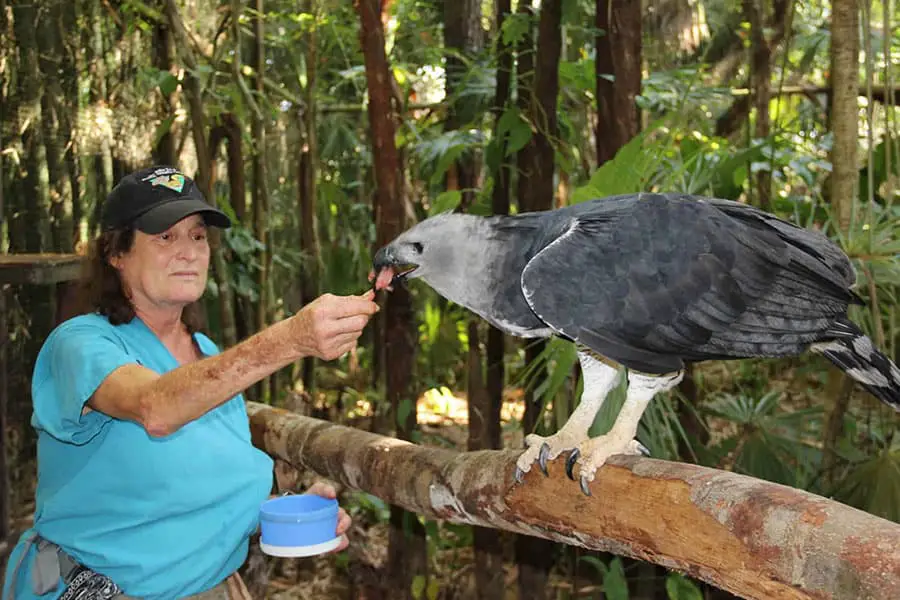
The VIP is led by a senior staff member who is an expert in natural history, animal care, wildlife biology, and conservation.
This tour will provide you unique wildlife interactions, “behind the scenes” animal encounters, and discussions about the history, mission, and conservation work of The Belize Zoo and Tropical Education Center.
Guided Day Tour
This tour take about 1.5 hours and is done by a Zookeeper or Education Officer.
The tour guide will share the backstories of many of the animals you’ll encounter at the Zoo; as well as insights into their natural history and roles in Belizean culture.
Additionally, many of the animals will respond better to the tour guides and are therefore more likely to get closer to you then if you were to go on your own.
Belize Zoo at Night
This tour normally starts at 7 pm and lasts for about 1.5 hours.
During the day, visitors to the Belize Zoo may encounter species like jaguars, tapirs, and ocelots, which become more energetic and interactive after sunset.
Nighttime brings the opportunity to see exclusive species such as the margay (the smallest spotted cat at the Zoo), paca (gibnut), kinkajou (night walker), and various owls.
The Belize Zoo At Night offers an immersive experience in a nocturnal jungle environment, showcasing a remarkable transformation from the daytime ambiance.
Guided by a knowledgeable Zookeeper using flashlights, guests are taken on an after-hours tour to observe over a dozen native nocturnal creatures.
Meet the Belize Zoo Animal Ambassadors
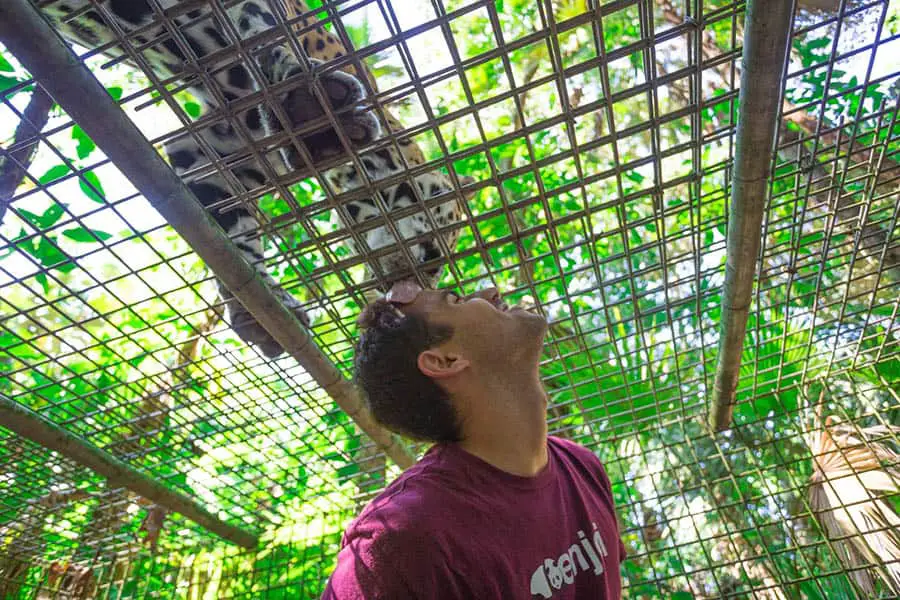
Enjoy a close and educational encounter with iconic residents at The Belize Zoo!
Accompanied by a Zookeeper or Education Officer, participants engage in a memorable interaction with animals, learning about their stories and natural history.
Each animal ambassador serves as a representative of its species, mirroring their wild counterparts.
Meet and Greet experiences are available for:
- Scarlet Macaw
- Central American Tapir
- Jaguar
These meet and greet opportunities normally happen twice a day, at 9am and 2pm.
Belize Zoo’s Role in Conservation Efforts
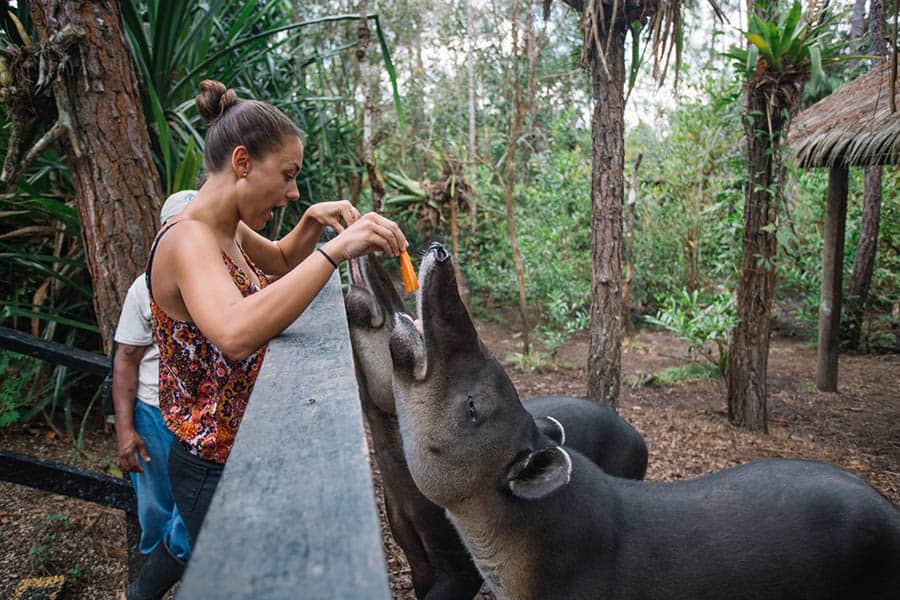
Belize Zoo is not just about fun. It’s a big help to nature too.
All the animals in the zoo are placed under living conditions that would match where they would be in the wild.
The zoo team does more than look after these animals at the zoo though, they also work hard to save wildlife out in Belize too.
They run important programs for tapirs, harpy eagles and jaguars that have had problems with people.
Some teams even use Belize Zoo as their base when saving certain types of animal around the world! One such group is the Tapir Specialist Group of the International Union for Conservation of Nature (IUCN).
By being home to this group, Belize Zoo plays an even bigger role worldwide!
Human Jaguar Conflict Program
One of the main programs that the Belize Zoo leads is the Human Jaguar Conflict Program (HCJP).
The jaguar, the largest wildcat in the Americas and an apex predator, faces conflicts with humans due to expanding human-dominated landscapes. “Problem jaguars,” typically older or sick individuals, prey on livestock when survival pressures increase in Belize due to habitat loss and hunting.
In response, the Belize Zoo initiated the Human Jaguar Conflict Program (HCJP) in 2003, collaborating with the Belize Forest Department.
The HCJP intervenes for verified repeat livestock predators, using humane trapping and transfer.
These jaguars (who normally exhibit high levels of stress and aggression) undergo behavioral conditioning, enrichment, and positive reinforcement to reduce this.
Medical examinations of these rescued jaguars often show signs of past injuries, impacting their hunting abilities.
Overtime the jaguars build bonds with zookeepers and the Belize Zoo make sure to provide enriching habitats that ensure long-term welfare of non-releasable jaguars.
The HCJP has saved over 25 jaguars from conflict situations.
As Belize’s sole authorized jaguar rescue facility, The Belize Zoo & Tropical Education Center collaborates with experts, contributing to ex-situ conservation efforts and conducting valuable research on jaguar behavior and species conservation.
Highlights and Must-See Attractions at Belize Zoo
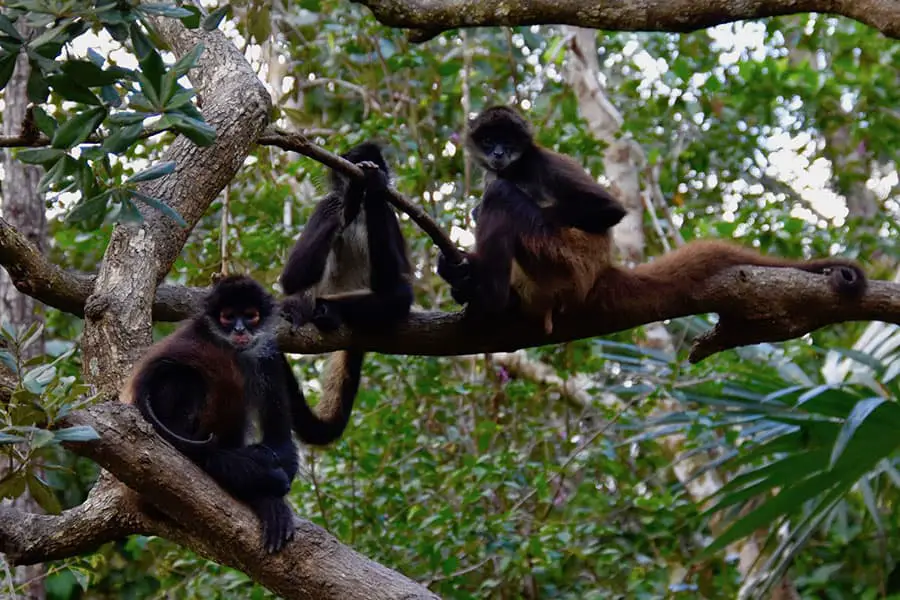
- Over 175 animals of 48 different species can be found at Belize Zoo.
- Visitors can have a close encounter during the meet and greet experience.
- Night tours are available to observe crepuscular and nocturnal animals.
- The zoo serves as the headquarters for the Tapir Specialist Group, which focuses on conserving tapirs.
- Conservation programs for harpy eagles and problem jaguars are also run at the zoo.
Nearby Attractions in Belize District
The Belize District is home to several nearby attractions that you can explore after visiting the Belize Zoo. Here are some must-see places:
- Museum of Belize: Discover the history and culture of Belize at this fascinating museum located in Belize City.
- Lamanai: Visit the ancient Maya city of Lamanai and explore its impressive ruins, including the iconic Mask Temple.
- Crooked Tree Wildlife Sanctuary: Immerse yourself in nature at this sanctuary, known for its diverse bird species and peaceful lagoons.
- Community Baboon Sanctuary: Get up close with howler monkeys in their natural habitat and learn about community-based conservation efforts.
- Barton Creek Cave: Go on a cave canoeing adventure at Barton Creek Cave and marvel at its stunning rock formations and ancient artifacts.
- Monkey Bay Wildlife Sanctuary: Experience eco-tourism at its best by participating in wildlife research, jungle hikes, and sustainable living programs.
Conclusion
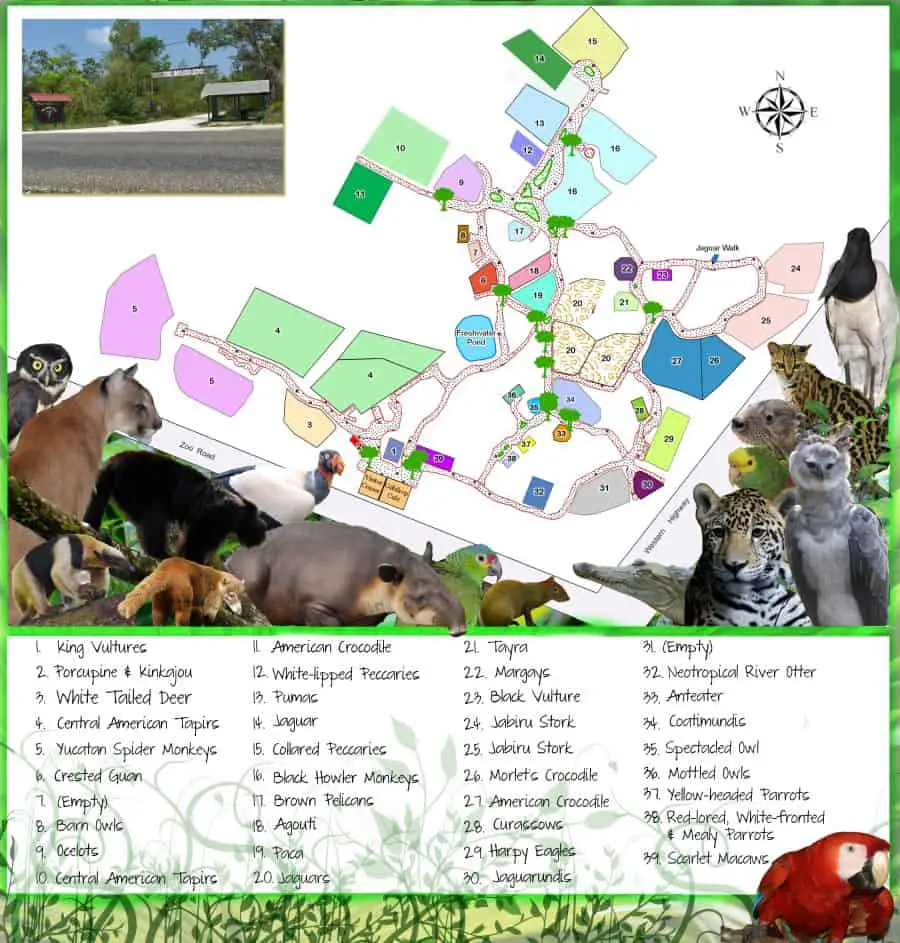
In conclusion, the Belize Zoo is a special place that combines conservation and education.
It provides an opportunity to explore and learn about the native wildlife of Belize in their natural habitat.
With its commitment to conservation efforts and educational experiences, the zoo serves as a valuable resource for visitors of all ages.
Don’t miss out on this unique chance to connect with nature and support the protection of Belize’s incredible biodiversity!
How Does Visiting the Belize Zoo Fit into a Trip to the Toledo District?
Visiting the Belize Zoo complements a trip to the Toledo District by offering a unique opportunity to connect with the diverse wildlife of Belize. After exploring the zoo, travelers can immerse themselves in the rich food and culture of the Toledo District, creating a truly authentic experience.
FAQs
1. What can I see at Belize Zoo?
At Belize Zoo you can spot native animals of Belize like margay, collared peccaries and Central American agoutis.
You may also see jungle birds, jungle cats, snakes or even crocodiles!
2. Where is the zoo?
Belize Zoo is located on Mile 29 Western Highway known as George Price Hwy.
3. Is it a natural environment for the animals?
Yes! Richard Foster helped set up Selva Verde to mimic the natural environment of Belize so that the wildlife feels at home.
4. Are there any special programs in this zoo?
Yes, there are unique projects such as the Human Jaguar Conflict Program Problem and the Maya Forest Corridor (MFC) held by www.belizezoo.org.
5. Can you tell me about some rare species in Belize Zoo?
In addition to common native wildlife of Belize; barn owls, mottled owls, crested guans and Great curassows are few among several rare species found here.

